15 Easy to Grow Red Aquarium Plants
Posted by Miles Harrison on 01/22/2022
Last Updated on 10/04/2022
Red aquatic plants tend to be more demanding than their green counterparts. High light, CO2, and a good nutrient dosing regime is the key to success for taking care of red plants in a freshwater aquarium.
In this post, we’ll recommend 15 easy-to-grow red plants that will add a pop of color to any planted aquarium.
Alternanthera Reineckii
Alternanthera Reineckii is a popular and easy-to-grow red plant that’s great for beginners. In low-light planted tanks, Alternanthera Reineckii grows slowly, but when introduced into a high-light CO2-injected tank, this plant will grow at a much faster rate.
When healthy, this plant can grow quite large. Fully mature plants can be a great addition to the aquarium midground. A smaller version exists, known as Alternanthera Reineckii ‘mini’, which does not grow as tall, and looks great when positioned in the foreground.
If a nutrient deficiency occurs, this plant will lose its vibrant coloration and begin to lose its leaves. Stable water parameters and a good nutrient-dosing regimen are a must to get the most out of this commonly sought-after plant!

Red Cabomba
Red Cabomba is a striking freshwater plant from South America. Similar to other versions of Cabomba, this plant requires high light, good CO2, and nutrient dosing.
This is a fast-growing plant that requires frequent pruning. In India, this is considered an invasive species. This plant can be pruned by trimming off the bottom portion of the stem and replanting the tops. Although this plant can be grown in hard water, it prefers softer conditions.
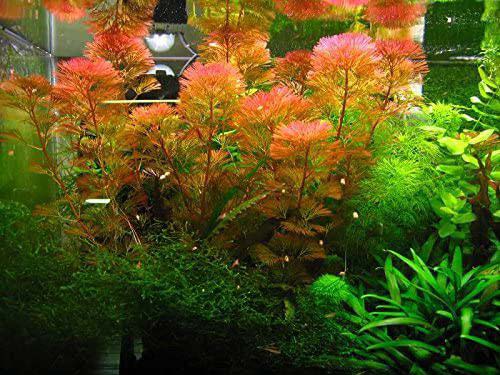
Rotala Rotundifolia
Rotala Rotundifolia can adapt to tanks without CO2 injection. High light and 20-30ppm of CO2 will bring out the best colors in this plant. Stems can be planted 1-2” apart and trimmed regularly to encourage side shoots.
🛒 Shop Freshwater Fish on Light Fish
This plant has been in the hobby for decades and is a great choice when looking to add some color to a planted aquarium.
Regular pruning is recommended to keep the lower leaves from light starvation. This plant originates from Southeast Asia.
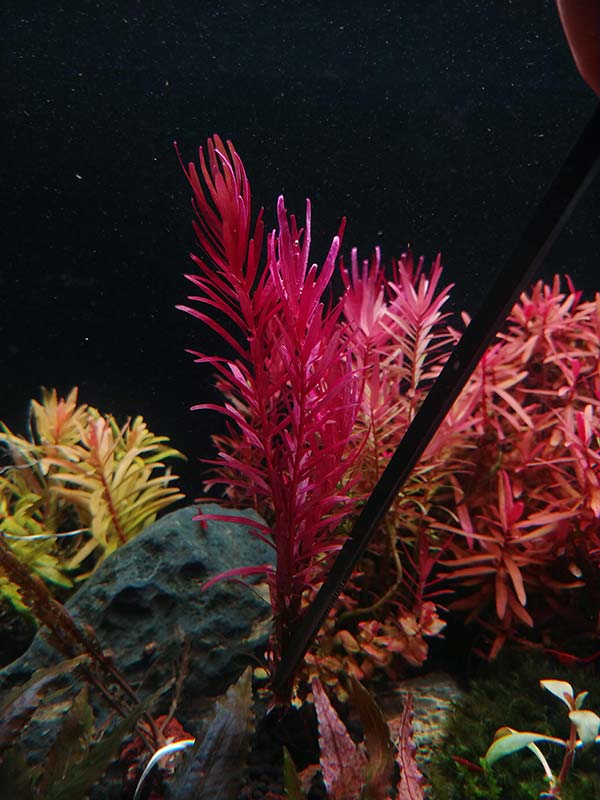
Rotala sp. "Colorata"
Similar to Rotala Rotundifolia, Rotala ‘Colorata’ features a light-red to orange color when under high-light conditions.
Rotala Colorata is an excellent background plant, and like other Rotala species can adapt to low light tank conditions, although it will lose some of its vibrant colorations.
This plant prefers a pH range between 5.5-7.0 and does great in temperatures between 72-82°F.
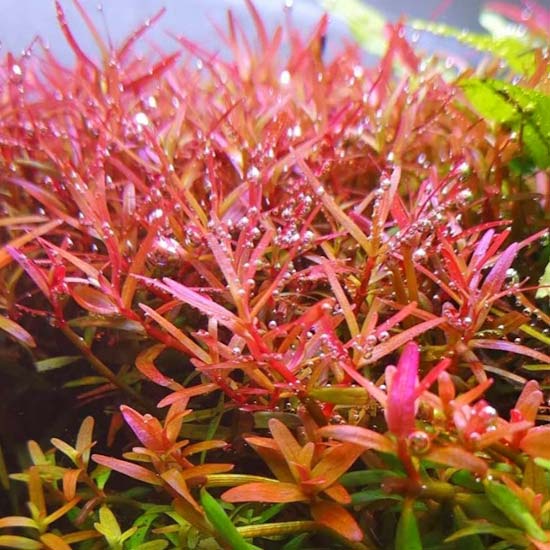
Ludwigia sp. "Super Red"
Ludwigia ‘Super Red’ is an easy-to-grow plant with round pointed leaves. These plants can grow without CO2 injection, but develop a more striking appearance when CO2 is used. Regular pruning will give this plant a bushier appearance.
This plant thrives with high light. If lighting is not sufficient, the leaves will start to lose their red coloration and turn green. We recommend a tank of at least 10 gallons, as this plant can grow to be quite large in good water conditions.
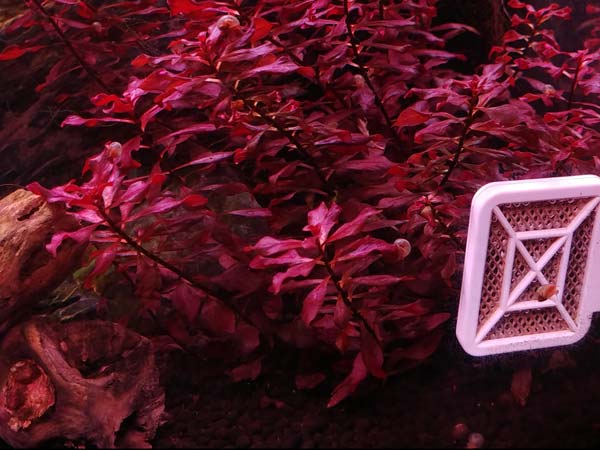
Rotala Blood Red Singapore Variant
Introduced to the hobby in 2021, the Rotala Blood Red Singapore Variant is a highly-sought after rotala species. This plant is known to be less demanding than the traditional blood red, but aquarists should use caution when purchasing, since this species is new to the market, it is often confused with the traditional blood red.
If you’re lucky enough to get your hands on this variant, this plant will reward you with a deep-red color that is sure to draw the eye!
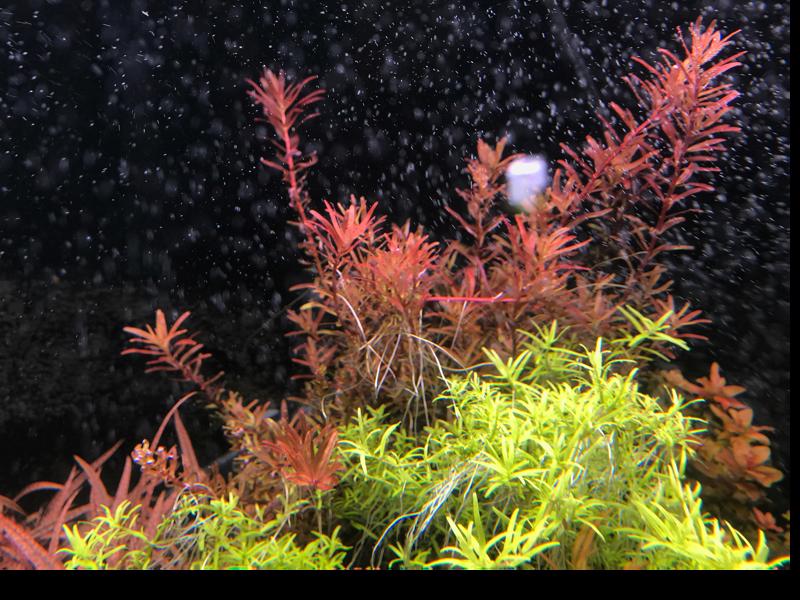
Ludwigia Repens Super Red Mini
Similar to the traditional Ludwigia Repens Super Red, the mini variant is known for its much smaller leaves. Rumored to have been originally cultivated in Germany, the Super Red Mini looks great even in moderate lighting.
If you’re looking for a red background plant that doesn’t require a high-light environment, the Ludwigia Repens Super Red Mini is a great option.
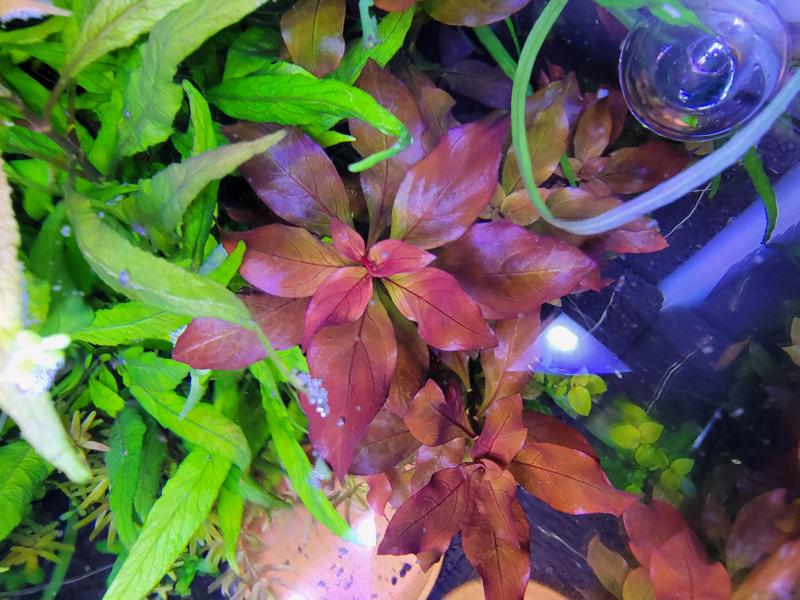
Crypt Spiralis Tiger
It doesn’t take much to see why the Crypt Spiralis Tiger is so popular. This plant’s sprawling leaves make for an excellent midground or background plant.
The leaves feature a remarkable tiger skin pattern, and when given appropriate care, this plant can grow to be quite large.
Similar to other crypts, this plant is a slow grower. Due to its slow rate of growth, it can exist comfortably with low levels of CO2 and lighting.
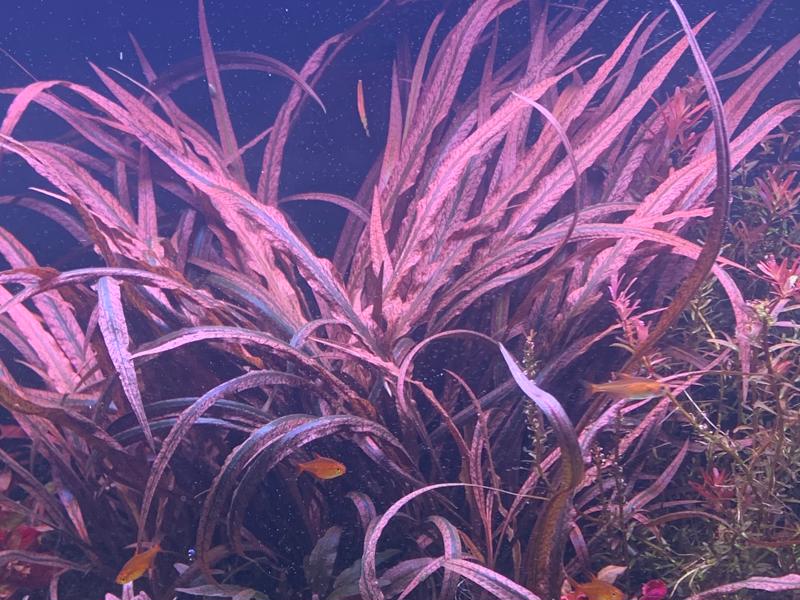
Cryptocoryne Pink Panther
Next on our list is the Cryptocoryne Pink Panther. This slow-growing crypt is quite stunning. When given appropriate lighting, its leaves are a beautiful pink color. Luckily for aquarists with harder water, this plant will do quite well in GH levels between 4-5dGH.
This plant can take many months to reach its adult size, so maintaining stable water parameters throughout its lifetime will set you up for success with this species.
This plant looks fantastic when paired with a purple fish, such as a purple betta or a purple moscow guppy!
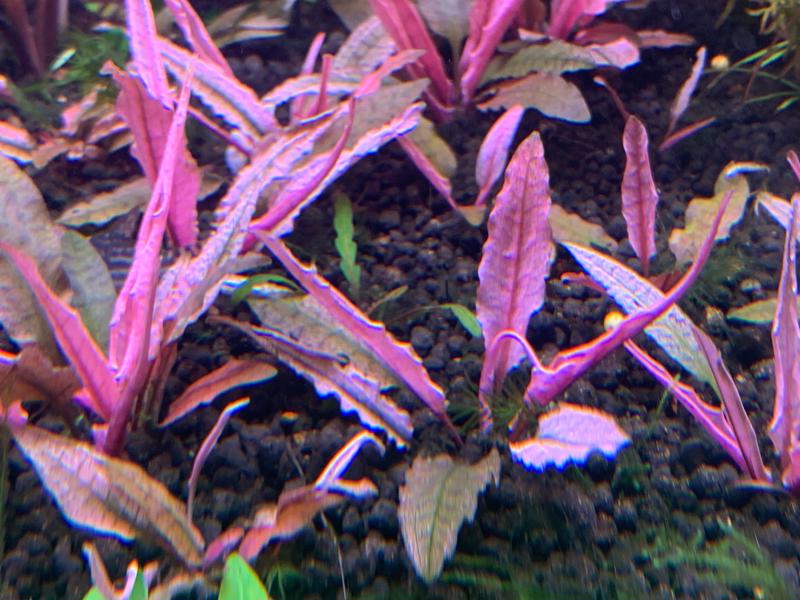
Rotala H’ra
Originating from Vietnam, this newly discovered Rotala species is known for its fragile leaves and beautiful color. Its submersed appearance looks quite different compared to its emersed appearance.
Submersed stems of Rotala H’ra will have much rounder leaves, while emersed stems will appear much more narrow.
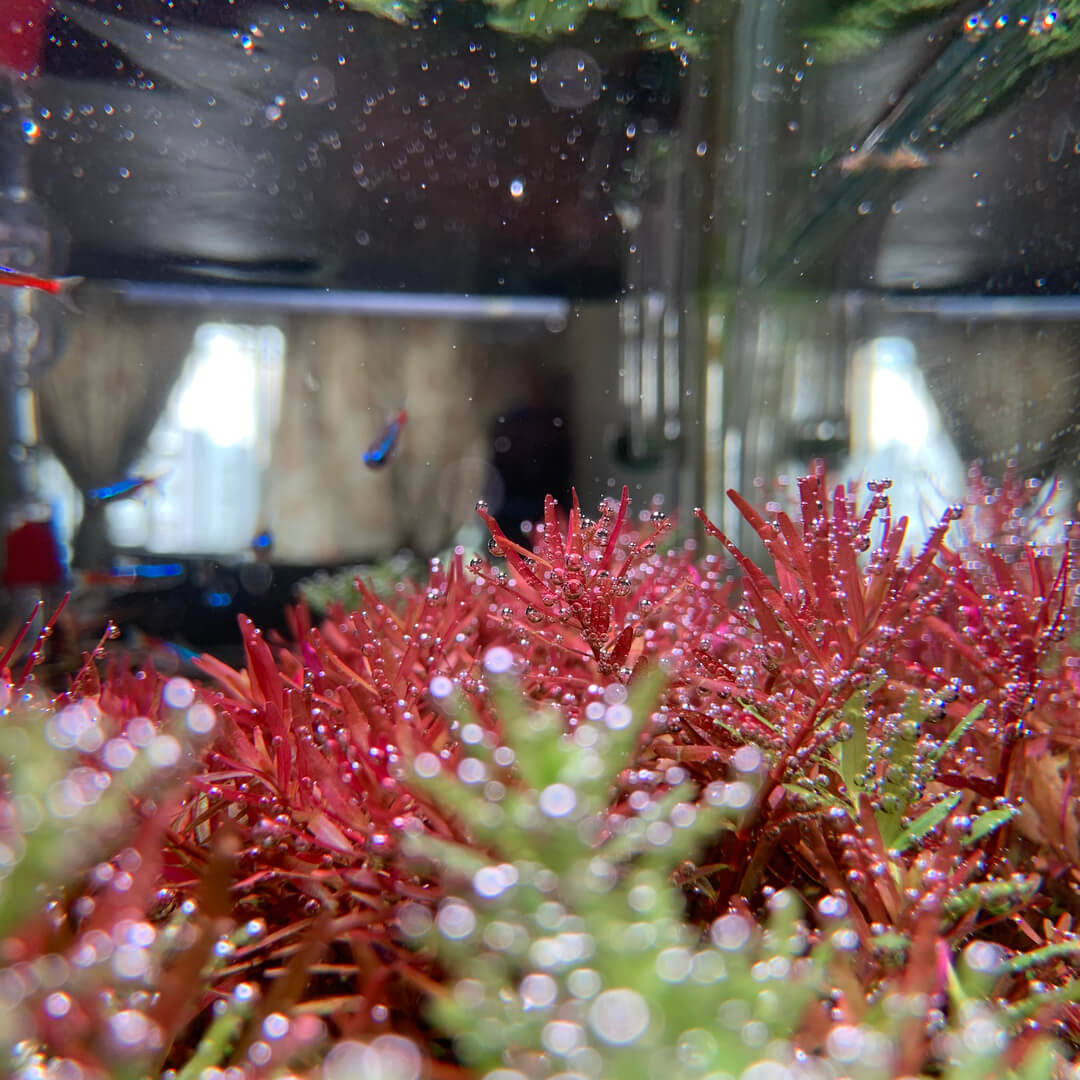
Rotala Macrandra
We debated adding Rotala Macrandra to this list, many hobbyists consider this plant to have demanding care requirements.
However, with high light, and ample CO2, growing Rotala Macrandra can be a breeze! Keeping an abundance of nutrients available in the water column, and performing weekly 50% water changes, will ensure you get the best growth possible.
This is a large plant and can outgrow an aquarium relatively easily. Pruning can be accomplished by trimming the stems and re-planting the tops. If you have a large aquarium, the colors produced by Rotala Macrandra are quite impressive. Rotala Macrandra will make a nice addition to an aquarium keeping larger fish, such as Koi Angelfish.
Red Tiger Lotus
This centerpiece plant creates a nice contrast when it’s placed near stem plants and other small ferns. The Red Tiger Lotus is known for its wide, lily-like leaves and light-red colors.
The plant is rather undemanding and will do quite well without CO2. Native to Africa, it will grow rapidly in optimal water conditions.
Red Root Floater
When it comes to floating plants, none are more iconic than Red Root Floaters. These plants are easy to take care of and provide a nice layer of shade to the lower portions of the tank.
The roots of this plant are a unique pink color, and can even turn blood-red under high light.
We love the Red Root Floater, as its light-blocking ability can help prevent common forms of aquarium algae from taking hold.
Cryptocoryne wendtii ‘Red’
Similar in size to the previously mentioned Cryptocoryne Pink Panther. Cryptocoryne wendtii ‘Red’ has a much different color. This cryptocoryne species has a reddish/brown tone, and is one of our favorite hard-water plants
This plant is native to Sri Lanka, where it thrives in hard water conditions. If you live in an area where your tap water is hard, Cryptocoryne wendtii ‘Red’ is an excellent red-plant choice!
Rotala wallichii
A favorite among planted tank hobbyists, Rotala Wallichii is a stunning plant native to Southeast Asia. While the lower leaves and stems appear green in appearance, the upper portion of this plant will show a wonderful pink color.
High light and low nitrate levels bring out the deepest reds of this plant, which will grow quickly towards the surface.
The leaves are small and narrow, creating a unique fluffy appearance. This species prefers slightly acidic waters, so you’ll want to be sure you’re injecting some form of CO2 if you plan on keeping this species. We think this plant would look quite well in a nano aquarium, or in a divided betta fish tank.
Conclusion
With so many red plants to choose from, we think the plants we've mentioned are an excellent starting point for hobbyists looking to add some red to their planted tanks.
Nutrient dosing, high light, good flow, and CO2 injection are the key ingredients needed to grow these red aquarium plants with ease.
We love feedback! If you enjoyed reading this article, feel free to send us an e-mail!
References
Some of the images used were provided by Reddit user nofeelings14
December's Giveaways on Light Fish














